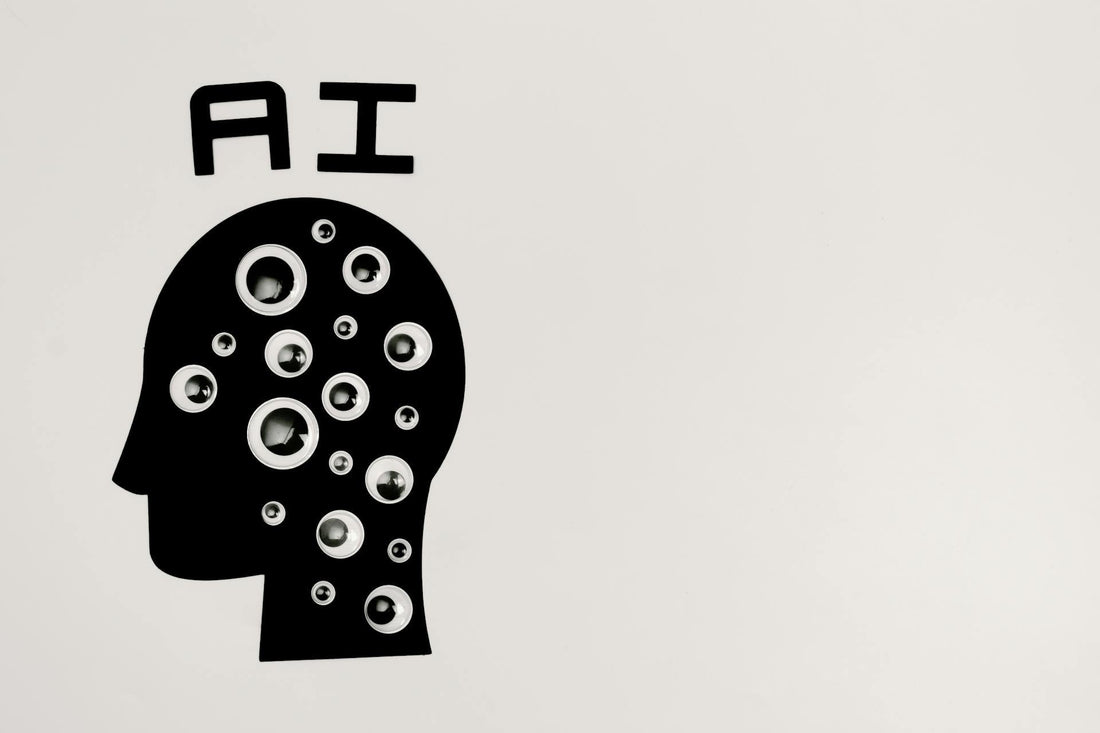
The Complete Guide to Shopify's AI Features: The Future?
When you're running an online store, time is money. Between writing product descriptions, managing customer inquiries, optimizing your inventory, and staying ahead of the competition, it's easy to feel overwhelmed. That's where Shopify's AI features come in. In 2025, Shopify has made significant strides in integrating artificial intelligence throughout its platform, promising to automate tasks and supercharge your business. But like any tool, these AI features come with genuine benefits and real limitations you should know about.
Let's take an honest look at what Shopify's AI can do for your business, what it can't, and whether it's worth your time and investment.
What's in Shopify's AI Toolkit?
Shopify has rolled out several AI-powered tools designed to make running your store easier. Here are the main players:
Shopify Magic
This the flagship AI feature—a generative AI tool built directly into your Shopify admin. It excels at creating product descriptions, generating email copy, and suggesting FAQ responses. You simply provide keywords or a brief description, and Magic generates professional content instantly. It's completely free for all Shopify plans.
Sidekick
This your AI commerce assistant that goes beyond simple text generation. Think of it as a business consultant available 24/7. Sidekick can analyze your store data to uncover business opportunities, summarize complex information, handle complex questions, and recently added voice chat capabilities. It can even help you understand why sales dipped or generate custom imagery for your store.
The AI Store Builder
This lets you create an entire storefront from a single text prompt. Describe your business—say, "sustainable yoga gear and eco-friendly apparel"—and Shopify generates a ready-to-launch storefront. You then customize it to match your brand perfectly.
The Horizon Theme with Built-in AI represents the next evolution of store design. This theme includes AI assistance for customization, allowing you to describe design elements (like "a holiday promotion banner with animations") and having the AI generate the code automatically.
Shopify Catalog and Knowledge Base
Enables your products to appear in AI shopping platforms like ChatGPT and Perplexity. When shoppers browse through conversational AI, your products can show up directly in their chat, allowing for seamless purchasing without leaving the conversation.
The Real Advantages: Why You Should Care
Let's be straightforward about what Shopify AI actually delivers.
It genuinely saves time.
The most compelling benefit is automation of repetitive tasks. If you're managing a store with hundreds of products, manually writing descriptions for each one is soul-crushing work. Real merchants report generating 500+ product descriptions in hours instead of weeks, freeing them up to focus on strategy and customer relationships.
It democratizes content creation.
You don't need a copywriting degree or a budget for an agency. Shopify Magic generates SEO-optimized content automatically, which means even small business owners can compete with larger players who traditionally had copywriting teams.
It improves consistency.
When AI generates your product descriptions and marketing copy, you maintain a consistent brand voice and tone across all your content. No more wildly different descriptions written at different times or by different team members.
It handles the technical heavy lifting.
AI theme builders and the Horizon theme make store customization accessible to non-developers. You can describe what you want, and the AI generates the necessary code—no Liquid templating knowledge required.
It drives real business results.
Merchants using Shopify Magic report conversion rate increases and significant cost savings. Some have saved $15,000+ in agency fees alone, making this a substantial ROI for a free tool.
It opens new sales channels.
Integration with ChatGPT and conversational AI platforms means your products can appear wherever customers are shopping online—inside chat interfaces. This is genuinely transformative for reaching customers in new ways.
The Honest Limitations: Where AI Falls Short
Now for the part Shopify might not emphasize as loudly. These limitations are real, and you should understand them before relying heavily on these tools.
Batch processing is limited.
Shopify Magic generates product descriptions one at a time. If you have 5,000 products, you're not going to generate descriptions for all of them efficiently using Magic alone. Specialized third-party apps like Yodel can handle bulk generation, but that's an additional cost and tool to manage.
Complex products stump the AI.
Shopify Magic works well for straightforward products with a few key features, but it struggles with items that have extensive technical specifications. If you're selling industrial equipment or highly specialized products with dozens of features, you'll likely need to edit the AI output substantially or write better initial prompts.
It doesn't handle everything.
Shopify Magic currently focuses primarily on product descriptions. It doesn't automatically generate product titles, meta descriptions, tags, or other critical SEO elements. You'll need dedicated apps for those features or manual effort.
Language support is incomplete.
While Shopify Magic supports English, German, Spanish, French, Italian, Japanese, Portuguese, and Simplified Chinese, if your business operates in other languages, you're limited.
Mobile experience is weak.
Not all features are optimized for mobile devices. If you manage your store primarily on your phone, you may find some AI tools cumbersome to use.
Quality requires human oversight.
This is crucial: AI-generated content needs review and editing. Sometimes Magic nails it on the first try; sometimes it misses the mark or includes inaccurate details. You always need a human to fact-check and add personality. Treating AI output as a first draft rather than final copy yields much better results.
Limited customization without technical skills.
While the AI store builder creates something quickly, truly customizing your store beyond the basics often requires knowledge of Liquid (Shopify's templating language) or hiring a developer. The visual editor has constraints that can frustrate businesses with very specific brand requirements.
The Deeper Limitations You Might Not Expect
Beyond these obvious constraints, there are more structural limitations worth understanding.
Shopify's broader technical limits affect AI potential.
The platform limits stores to 100 variants per product and throttles uploads after 50,000 product variants. These aren't AI limitations per se, but they constrain how effectively AI tools can work at scale.
SEO tools have inherent constraints.
Shopify doesn't allow full control over the robots.txt file or provide complete flexibility with URL structures. This limits how much AI-generated content can be optimized for search engines compared to platforms like WordPress.
You're dependent on third-party apps.
For advanced features, you'll likely need to purchase and integrate additional apps from the Shopify App Store. Each app adds cost, creates potential integration complexity, and can slow down your store if too many are running simultaneously.
AI shopping integrations are still evolving.
While integration with ChatGPT and Perplexity is exciting, these channels are brand new and still developing. You might be getting early-adopter headaches without guaranteed returns.
The Importance of AI in Your Shopify Store (And Why You Shouldn't Ignore It)
Despite the limitations, there's a compelling reason to take Shopify's AI seriously: your competitors are already using it. Here's why adoption matters for your business in 2025.
Google is changing how search works.
Google's AI-powered search results are reshaping SEO strategy. Businesses that optimize their content with AI tools perform better in this new landscape. Shopify Magic helps you stay competitive here.
Customer expectations are shifting.
Shoppers now expect personalized experiences, smart product recommendations, and fast, intelligent customer service. AI enables all of this. Businesses ignoring AI are at a real disadvantage.
Content marketing is becoming a bottleneck.
As online competition intensifies, you need more content, faster. Manually writing product descriptions, meta tags, and marketing copy simply doesn't scale. AI fills this gap.
New sales channels require AI.
Conversational commerce through ChatGPT and similar platforms is where shopping is heading. Businesses that set up their Shopify Catalog and Knowledge Base now will have a first-mover advantage.
It's a cost-efficiency play.
Using free tools like Shopify Magic costs you nothing and saves you significant time and money. From a pure business perspective, not using the free features your platform offers is leaving money on the table.
How to Use Shopify AI Effectively
If you're convinced to give Shopify's AI tools a try, here's how to get the most from them.
Start small and focused. Pick one specific task—perhaps generating product descriptions—and spend a week testing it. Does the AI output meet your standards? Are you saving meaningful time? Only expand to other uses once you've validated the first one.
Treat AI as a collaborator, not a replacement. Review all AI-generated content. Edit it for accuracy, add personality, and ensure it aligns with your brand voice. This hybrid approach consistently delivers better results than pure AI output.
Use it for the heavy lifting, not the fine details. AI excels at creating first drafts, structuring content, and handling routine tasks. Use it there. Reserve your time for strategy, customer relationships, and uniquely human work.
Combine tools strategically. Shopify Magic handles basic descriptions. Use Sidekick for business insights. Consider third-party apps for bulk operations. A thoughtful combination of tools is more powerful than any single tool alone.
Experiment with new features as they roll out. Shopify is rapidly evolving its AI capabilities. Stay curious about new features and test them with your store. Early adoption often reveals opportunities competitors miss.
The Conclusion
Shopify's AI features represent a genuine step forward for e-commerce merchants. They're powerful, increasingly sophisticated, and they're free. Shopify Magic and Sidekick genuinely save time. The AI store builder and Horizon theme make professional store design accessible to everyone. Integration with conversational commerce platforms opens new sales channels.
But these tools are not magic bullets. They have real limitations. They work best for straightforward use cases, require human oversight, and can't handle complex scenarios without support from third-party apps or developer expertise.
The businesses succeeding in 2025 aren't those waiting for perfect AI. They're the ones experimenting with these tools now, understanding both their strengths and limitations, and integrating them thoughtfully into their workflow. They're using AI to amplify their strengths and automate their weaknesses, not replace their judgment.
If you're running a Shopify store, your question shouldn't be "Should I use AI?" It should be "How do I use AI strategically to grow my business faster?" The answer starts with understanding what these tools can and can't do—which, hopefully, this guide has clarified for you.
The future of e-commerce is AI-augmented, not AI-replaced. Smart Shopify merchants are already building that future.






